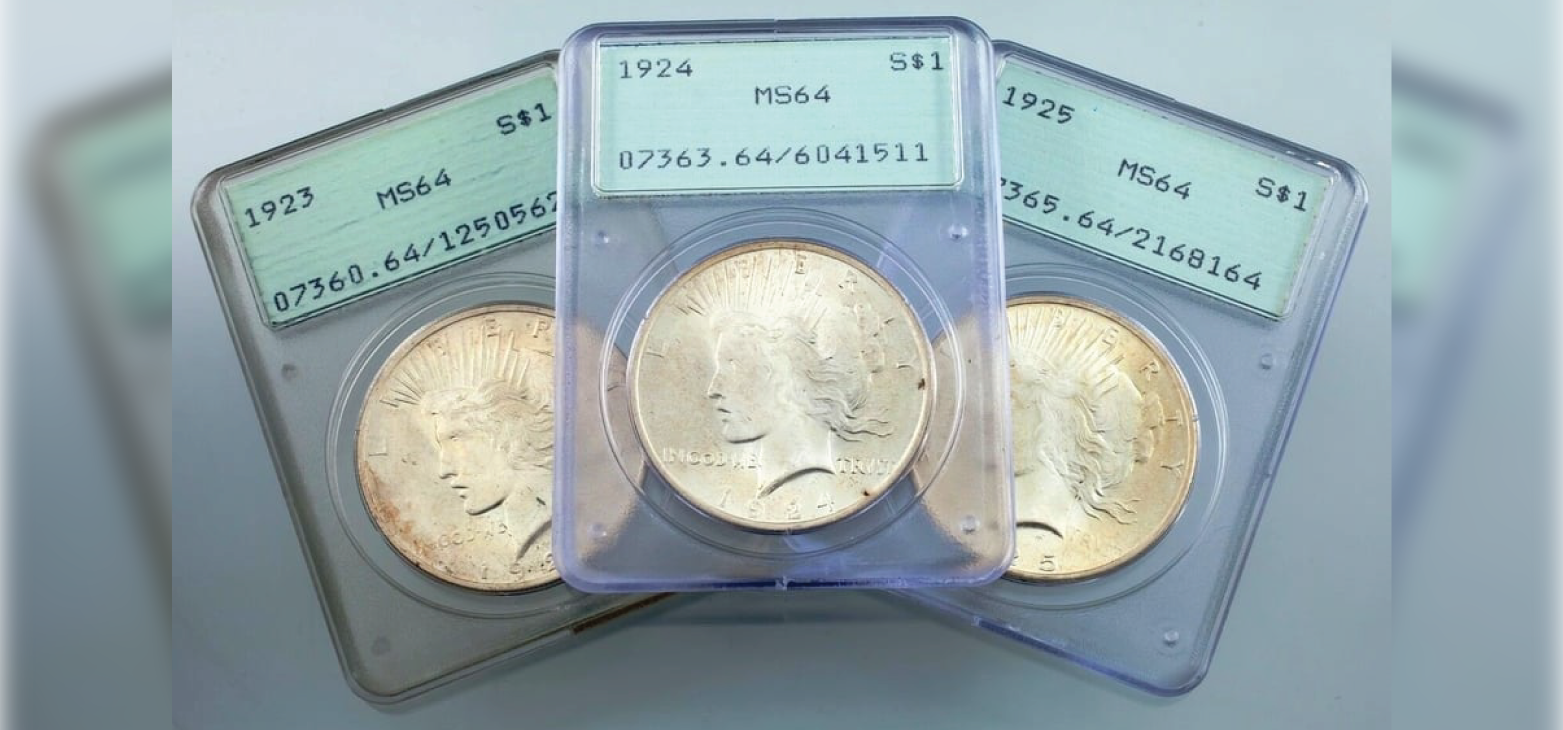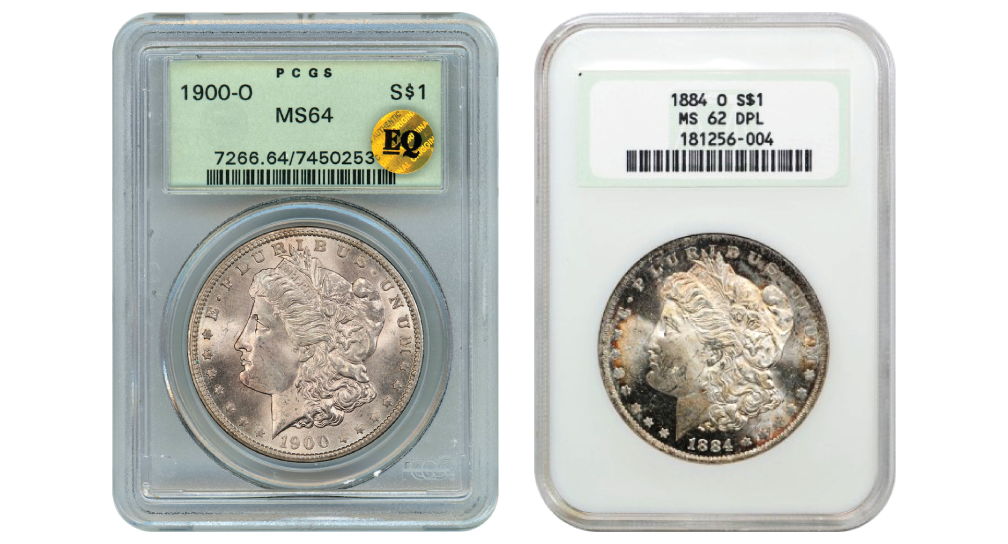Part 2: Unveiling the Value and Opportunities of Vintage Slabs
Post by: Walt Durham
in Gold & Silver

Part 2: Unveiling the Value and Opportunities of Vintage Slabs
In our previous exploration, we discovered the allure of PCGS Old Green holders and vintage NGC Fatty holders. Now, let's delve deeper into the reasons why collectors and investors flock to these older slabs and uncover the hidden opportunities they hold.
One of the primary draws for collectors is the historical significance associated with these vintage slabs. Many of the coins housed in PCGS Old Green holders and vintage NGC Fatty holders were traded during the late 1980s certified coin bubble, a time when Wall Street briefly intersected with the numismatic realm. The exuberance of investors caused certain coin series, like classic U.S. commemorative coins, to skyrocket to absurd heights. Even today, some 30 years later, prices for these coins are still down by as much as 90% from their all-time highs. This presents a unique opportunity for collectors and investors looking to acquire older, numismatically-oriented coins at favorable prices.
As an aside, it's worth noting that the present moment presents an excellent time to invest in many series of older coins. After all, can you name anything else that still costs the same as it did in the 1980s? The stagnant prices of these numismatic treasures make them an enticing prospect for savvy collectors seeking long-term value.
However, the main reason most collectors and investors gravitate towards PCGS Old Green holders and vintage NGC Fatty holders is the increased likelihood of acquiring a solidly-graded coin that matches its stated numerical grade. While third-party grading companies strive for consistency, coin grading inherently involves a degree of subjectivity. Even experienced professionals can have off days or fatigue-induced lapses. In a market where a single numerical grade difference can translate into hundreds or even thousands of dollars, ensuring the accuracy of a coin's grade becomes invaluable.
Of course, our exploration of vintage NGC Fatty holders and PCGS Old Green holders would be incomplete without touching upon the topic of crack-outs and re-submissions. Older slabs from PCGS and NGC were often graded so conservatively that a secondary market emerged in the early 2000s, focusing on removing under-graded coins from their holders (cracking them out) and resubmitting them in the hopes of securing a higher grade.
The crack-out frenzy created a decade-long surge from the late 1990s to the late 2000s. During this period, the third-party grading services had transitioned away from the stringent grading practices of the PCGS Old Green holder/NGC Fatty holder era. Consequently, a coin conservatively graded in an older holder had a genuine chance of receiving a one or, in rare cases, two-grade increase upon resubmission.
The appeal of older PCGS and NGC holder coins remains very strong to this day. Many vintage NGC Fatty holders and PCGS Old Green holders house exceptionally attractive coins for their assigned grades. Moreover, collectors often believe that vintage slabs have a better chance of receiving CAC (Certified Acceptance Corporation) or EQ (Exceptional Quality) approval, further enhancing their desirability.
As a bonus, there remains the possibility of resubmission upgrades in certain niche numismatic markets that have languished since the turn of the millennium. Therefore, astute observers may still discover opportunities with common-date Morgan silver dollars, Walking Liberty halves, and classic U.S. commemorative halves. These series still offer the tantalizing chance of acquiring an authentically under-graded coin, especially when focusing on eye-appealing examples.
In conclusion, while they may not possess mystical powers, PCGS Old Green holders and vintage NGC Fatty holders serve as an excellent avenue for astute coin collectors and investors to acquire well-graded rare coins at an affordable cost.